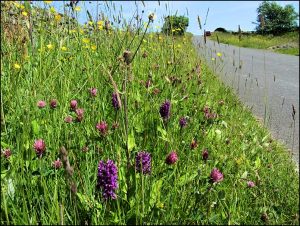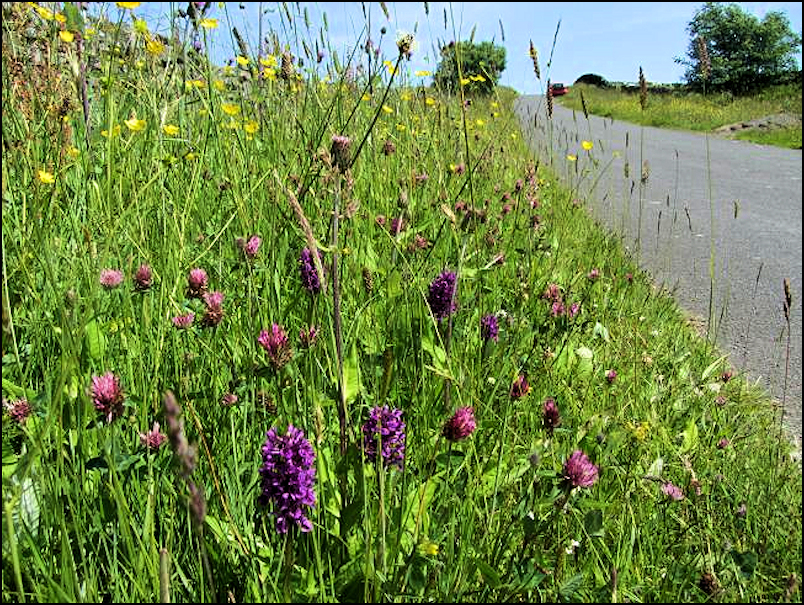
Grass verges are to be cut twice a year only to help plants, insects and animals.
Britain has more than 310,000 miles of verges along its rural roads.
They are home to more than 700 species of wildflowers, including 29 of the 52 species of wild orchid found in this country.
Currently verges are cut four times a year.
But wildlife organisations say that is too much for these rare plants to survive.
It’s estimated 97 per cent of wildflower meadows have gone over the 100 hundred years.
The new guidelines were drawn up with the advice of Natural England, Highways England, Transport Scotland and the Welsh Government.
Clare Warburton, the Principal Advisor on Green Infrastructure at Natural England, said:
“Road verges can be designed and managed to support an array of wildlife, as well as helping us tune into nature on our daily walk, cycle or drive.
“A great multi-tasker, nature on the road verge does a number of jobs like cleaning the air, storing carbon, pollinating crops and providing sustainable drainage.
“We welcome this publication which offers cost-effective, practical solutions to better managing our road verges for people and wildlife.”
Dr Trevor Dines, the Plantlife Botanical Specialist, said:
“It’s heartening to see road verges increasingly recognised as wildlife havens, rather than the inconsequential ‘edgelands’ that flash by in the car wing mirror as we speed ahead with our busy lives.
“Where once there was a desire to see verges scalped to the bone for that neat-and-tidy look, there’s an increasing appetite for ‘messier’ verges that provide better cover and food for wildlife.
“As well as offering hope to some incredibly rare flowers like wood calamint and fen ragwort that now only appear on road verges, the shift in public attitudes – reflected in the huge support for the Plantlife petition – means we could see more familiar flowers like cowslip, oxeye daisy, knapweed, tufted vetch and even orchids on our journeys.”























